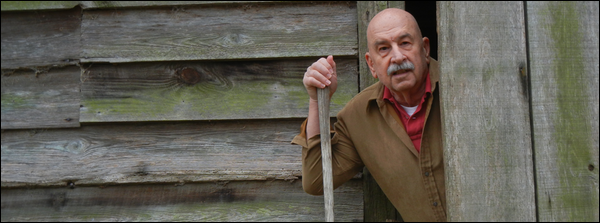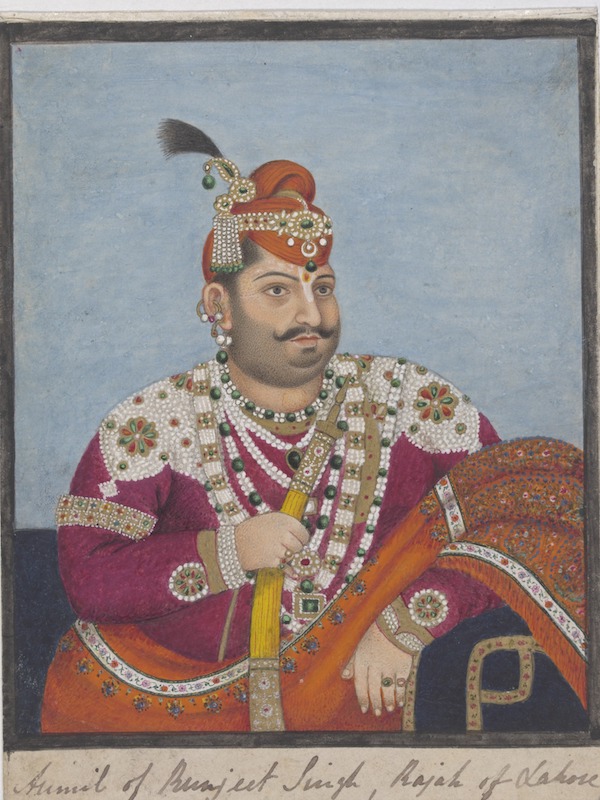Nothing to Wear! Nothing to Wear!
“Paisley became the center for the largest production of these fancy Victorian manufactured shawls, lending its name to the pattern motif so strongly identified with the shawls woven there. That ‘Paisley’ pattern immediately suggests an elongated rounded droplet shape, with the pointed tip drooping. Someone old enough to remember the hippie styles of the 1960s and 70s will remember with varying appreciation what the paisley motif looks like.”—William A. Balk, Jr.
Epicurus’ Porch
By William A. Balk, Jr.
 ELKO South Carolina—(Weekly Hubris)—May 2017—The invitation, in an elegant engraved envelope, was to a rather posh society’s installation of new officers, to be followed by an appropriately sumptuous feast and gala celebration, and to act as escort to the retiring president of the society, a very witty and worldly grande dame. The friend extending the invitation explained that while the event did require formal dress, and that while I had both a dinner suit and a full dress outfit (hence our friendship!), she did mention that some men often wore a kilt of family tartan.
ELKO South Carolina—(Weekly Hubris)—May 2017—The invitation, in an elegant engraved envelope, was to a rather posh society’s installation of new officers, to be followed by an appropriately sumptuous feast and gala celebration, and to act as escort to the retiring president of the society, a very witty and worldly grande dame. The friend extending the invitation explained that while the event did require formal dress, and that while I had both a dinner suit and a full dress outfit (hence our friendship!), she did mention that some men often wore a kilt of family tartan.
Well, I thought, if either a dinner suit or full tails and white tie is deemed acceptable, then surely full dress is overdoing it. Then she told me that a white dinner jacket was also worn by some male guests, even though the event was well before Memorial Day and not, alas, aboard a cruise ship.
That was when I realized that—posh or not—the invitation did not really mean “formal.” Rather, the event was to be in formal-style costume, evoking a grandeur and social position none of us properly could claim.
Even in my years in Washington, the only times “white tie” was indicated on an invitation was for a rare diplomatic reception and perhaps one or two galas. Black tie was more frequent a request but, over the two decades I spent there, “black tie” came to mean only “dressy.” And that opened up interesting possibilities for my friends and me.
This circle of friends seemed always to be popular as guests for the social events connected to the arts and theater; we were ourselves artists and designers, collectors and critics, gallerists and mavens. We were expected to interpret “formal” or “black tie” in creative ways.
When Luciano Pavarotti and the Metropolitan Opera made their first visit to the Kennedy Center in 1980, I decided to wear my “black tie” outfit—trousers with satin stripe, pleated shirt, black bow tie, black silk vest—but instead of the black dinner jacket, I wore over my shoulders one of my intensely colorful, handwoven Kashmir shawls from c. 1815. And carried a gold-headed cane. It was hardly “black tie,” but it was celebrated at the event, where costume-dressy was far more appropriate than the classic formal attire.
At another festive event, for Mikhail Baryshnikov’s debut performance in Washington with the American Ballet Theater, I had worn a similar black tie outfit, using a full-sized black Victorian cashmere shawl of gossamer weight. These Victorian shawls, known as “plaids,” were made to cover the full-skirted hooped or bustled gowns fashionable in that century, measuring about five feet in width and ten feet in length, so the amount of luxurious fabric alone was enough to make a dramatic presentation.
These shawls had become an obsession for me. I was at the time trading in period textiles, primarily hand-made laces of the 17th, 18th, and 19th centuries. I had been awestruck by the detail, intricacy, and brilliant colors of several Victorian Paisley shawls I had seen, especially once I had a chance to examine them closely to understand their manufacture.

These shawls had been the height of fashion in Europe and America throughout most of the 19th Century, and thousands were woven on the jacquard looms of Lyons and Paris, Norwich and Edinburgh and, especially, in Paisley, Scotland. It was this machine production which had made the marketing of such shawls possible, but I discovered that the textiles had an even more remarkable history, extending centuries back even to Roman times, as princely possessions and royal gifts. Those original shawls were handwoven in twill tapestry technique and were often embroidered, as well. Napoleon himself is sometimes credited with introducing the luxurious Kashmir shawls to the European courts, having discovered them in Egypt.
Paisley became the center for the largest production of these fancy Victorian manufactured shawls, lending its name to the pattern motif so strongly identified with the shawls woven there. That “Paisley” pattern immediately suggests an elongated rounded droplet shape, with the pointed tip drooping. Someone old enough to remember the hippie styles of the 1960s and 70s will remember with varying appreciation what the paisley motif looks like.
The droplet-like paisley motif, however, is much older than the Victorian craze for shawls, having appeared for centuries in designs, especially textile designs, from the Levant eastward to the mountains of the Indian subcontinent. The ancient motif—given the name boteh and frequently described as “a vegetable motif”—had been incorporated into the designs of many shawls, all woven in tapestry methods or embroidered on a background fabric.
The boteh motif has fascinated me since I first encountered it in these magnificent cloths. The term is apparently from the Persian, meaning “bush, shrub, flower,” but that translation isn’t particularly enlightening. Various sources describe the design as deriving from: a pine cone, a cypress tree in the wind, a lotus flower, a pomegranate, a leech(!), a leaf, and several other imagined sources. The motif itself appears to take on slightly different characteristics depending on the time of production, the understanding of the meaning of boteh, and the whim of the designer or weaver. Nevertheless, the design appears in recognizable form in countless textiles from many cultures and many periods.

Thirty years ago, information on the history and design of both Paisley shawls and their handmade predecessors from Kashmir was sparse. I spent years gleaning bits of information from texts, interviewing collectors and historians, and acquiring and studying examples of the cloths, themselves. One summer, I was able to delve into the locked drawers and hidden shelves of the Victoria and Albert Museum in London. Eventually, I became a fairly knowledgeable student of the history and process of the shawls.
I’ve occasionally sought to verify a point or two in this essay, for which I have the internet at hand. It is astounding to find the amount of information immediately available now on this admittedly obscure subject. In one article online, I found more information than I had been able to accumulate over two or three years of research in the 70s and 80s. At first daunted, I am now inspired at having so much data available for me to extend substantially my existing knowledge of these textiles.
That sabbatical summer at the V&A in London wasn’t spent only on researching Paisley and Kashmiri shawls. I was also provided access to magnificent examples of the impossibly delicate needle laces and bobbin laces of 17th and 18th-century Bruges, Alençon, Chantilly, Venice, and other lace-making centers. I realize I must now do more online research to discover how much more knowledge has become available in the years since then, although there is certainly no substitute for the experience of examining the object itself rather than its representation on a screen.
An engraved invitation on heavy stock, and from a grande dame, no less! I can certainly imagine properly wearing my white tie and tails—such opportunities are uncommon and great theater. I must consider, though, that my most important function on this occasion is to enhance the eminence of my hostess; “costume,” whether dressy or not, would be an inappropriate intrusion on her glory. The obvious solution is to wear my classic black-tie dinner suit, to muster scintillating conversation with the other guests, and to offer my hostess an unobtrusive backdrop for her own wit, charm, and glowing visage. I’ll drop the Paisley shawl . . . but I will keep it handy in case Lady Gaga begins her next tour in Beaufort!

Author’s Note: Obscure though the subject may be, some readers may be interested in this page I found on the history of the Paisley weaving industry, which provides an astonishingly full context for the development of that textile center, which lasted until 1941:
http://www.tartansauthority.com/resources/archives/the-archives/harrison/the-paisley-shawl/l.
The images accompanying this essay are from Wikipedia Commons. Each is in the public domain and may be used without attribution


3 Comments
Athinadi
Absolutely fascinating…. having read your piece, I visited the website you gave.
Wow! I thought I knew ‘something’ about Paisley and tartans – but now realise what I know is about as much as could be fitted on a postage stamp – figuratively speaking…. !!!
Thank you William for adding so very much more information – as I said – absolutely fascinating.
di
Richard Parsons
My children, unevenly educated, referred to those “elongated rounded droplet shapes” as “germs;” they never called it paisley; they said, “germ-patterned shirt” or “a shirt with germs on it.”
And how wonderful to be in the company of one who properly refers to that attire as “dinner suit” without mentioning that place up North somewhere.
And in my old age I sometimes lean on my great-grandfather’s country-made silver-headed walnut walking stick. (“Made from three silver dollars,” My grandmother assured me.) It elicits much sympathy.
No shawls yet, but I received just today a pattern for a banyan and cap. When I find just the right silk, I’ll be sewing it up.
Will B
Aiyeee! the pattern includes the cap as well! I will have to keep eyes open for sources for superb silks for you. I wonder of Schumaker might make something suitable . . . prepare to pay rectally for anything with their imprint. I just saw this: https://www.decoratorsbest.com/p-schumacher-luciano-silk-damask-azurro-fabric-22861.aspx?gclid=CKPQq5yY4dMCFceNswod1v8Aig. Thanks, Richard, for reading – and especially for commenting.